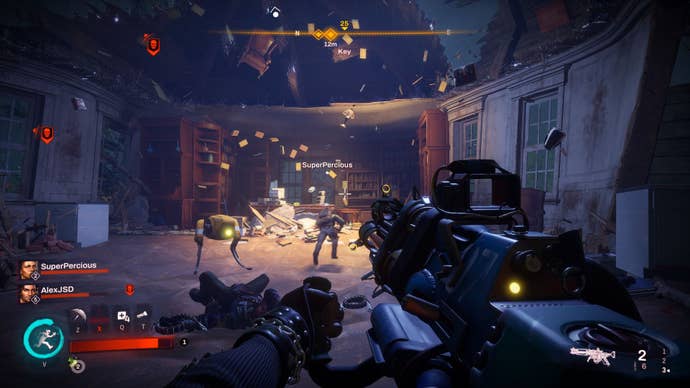Products You May Like
The sun is gone. Blotted out by a pantheon of vampiric gods who, in lieu of gleaming palaces and gothic castles, have laid claim to an unassuming island town off the coast of mainland Massachusetts. Low light is provided by the UV lamps and muzzle flare of private military contractors and cultists; a little warmth by the body heat of locals huddled together in resistance. If the internet worked, your weather app would tell you to expect lukewarm temperatures at best. Perhaps that explains why Redfall is slightly underbaked.
For many years now, Arkane has delivered an unbroken series of brave and inspired first-person action games, from 2012’s Dishonored to 2021’s Deathloop. They’ve sometimes been divisive, asking a lot of their players and nudging them towards unfamiliar playstyles, but even the studio’s detractors would concede these games were exquisitely designed and beautifully presented. You may not want a Fabergé egg in your house, but you have to admire the artistry.
Redfall breaks that hot streak. While it resembles its predecessors – osciliating between stealth and shooting, its domestic spaces filled with scattered stories to piece together – the results are soggier than usual. Don’t get me wrong: Redfall is a good open world FPS you can enjoy for dozens of hours with friends. But it’s a noticeable step down from the high perch occupied by Corvo and Colt. It’s the first missable Arkane game in an age.
The reasons for that are, I suspect, embedded in the previous paragraph: ‘co-op’ and ‘open world’. Redfall is the studio’s first-ever attempt at constantly online multiplayer, as well as its inaugural move away from dense, self-contained levels to create a continuous, large-scale space. Developers don’t like to let you see them sweat, but here the strain – of learning new things while pulling together something polished and playable – is barely concealed.
A typical Dishonored level is riddled with potential pathways towards targets that can be tackled in multiple ways – with a knife in the back, a supernatural sword fight, or something more elaborate and authored. A typical Redfall mission is much less malleable.
It’s true that Redfall’s central story quests tend to offer options you wouldn’t find in, say, a Dead Island: combining traversal powers to scale the roof of a cinema from an alleyway; divining the location of an old smuggling tunnel which grants access to a farmhouse basement. Some offer moral dilemmas and hostage situations with consequences. But they are a relative rarity. Far more often, you’ll be engaged in straightforward bust-ups with mobs and minibosses in the Borderlands mode.
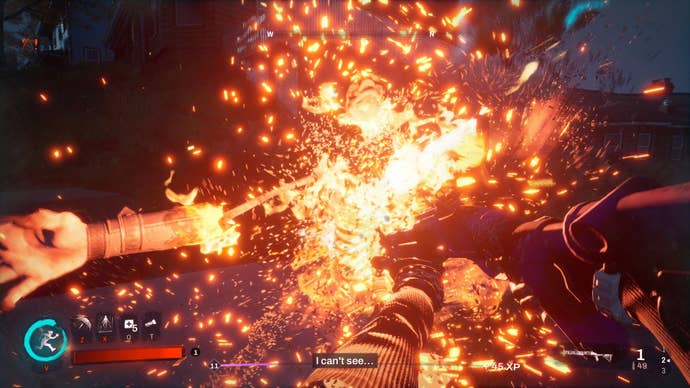
Thankfully, the shooting is just as chunky and impactful as it was in Deathloop, and Arkane turns its vampires into a engaging problem to be solved in the chaos – either by exposing them to UV rays before shattering them with a playful punch, or by puncturing their hearts with a sharp piece of wood. Stakes can be attached to certain classes of gun as bayonets, or propelled at high velocity from launchers, and double as silenced weapons to take out cultists in one hit. As the undead flit about – vanishing from between your crosshairs and reappearing somewhere over your shoulder – you’re never allowed to forget the unique form of threat you’re facing.
Yet a key piece is missing from Arkane’s combat puzzle: the takedown. While you can insta-kill a human enemy by thwacking them in the small of the back, the resulting thud is less than satisfying – and you won’t be plunging onto an unaware guard from a great height, nor sinking a blade into the throat of a staggered opponent. It’s a baffling omission, depriving both stealth and shootouts of the punctuation you’ll find in Dishonored and Deathloop, or in Far Cry – one of Redfall’s primary inspirations.
Far Cry might have been the logical comparison for Arkane to draw, but perhaps not a favourable one. Yes, Redfall is structured around hubs and safehouses from which you accept missions and plot a course across the map, taking in side activities and picking off patrols as you go. But there’s nothing as substantial as Far Cry’s outposts hidden between Redfall’s seaside homes and cornfields, nor any of Ubisoft’s wildlife or road traffic. Perhaps, eight iterations down the line, a Redfall open world could be comparably lively; as it stands, the act of moving through the town more readily recalls Outbreak, the freeroaming Call of Duty Zombies mode in which you and three pals turn houses upside down for loot before converging on a combat objective. A perfectly fine format, but not one that convinces as a living world.
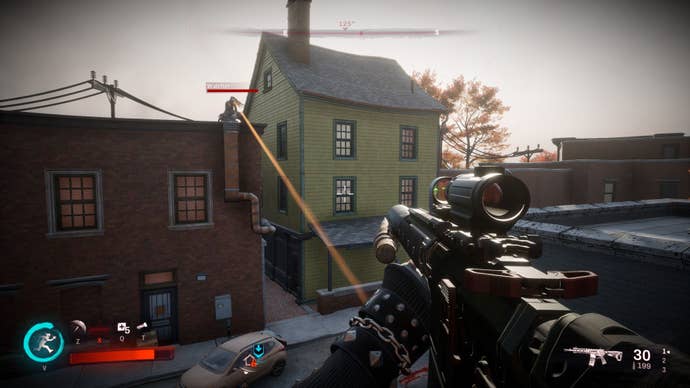
Of course, the place feels much less empty in co-op, where your unusual traversal and combat powers combine in creative and unexpected ways. Playing as Layla, “the telekinetic threat in student debt”, I soon fell in love with the spectral elevator which flings her high into the air; a friend, meanwhile, experimented with Devinder’s translocator, a grenade that creates an exit portal for teleportation. Before long, we’d discovered a way to combine the two, and with practice, could scale cliffs and water towers in an instant – a double-act that never got old.
It’s fair to say Redfall gets better with time. A second map introduces rival cultist factions who, when not locked in bugged battles where neither side can injure the other, keep the streets busy and tempt you down from the rooftops for impromptu scuffles. And as your knowledge of the setting accumulates through hundreds of found notes – diary entries, meal prep schedules, surprisingly moving church sermons – the buildings themselves are imbued with added meaning. A picture emerges of Redfall, the town: sleepy enough that it couldn’t rouse itself to counter an elite come to bleed it dry, but with roots so deep that its community continues to exist underground – its vicars and doctors holed up in fire stations and maritime museums.
But a story delivery system of this kind doesn’t suit multiplayer. It takes real doggedness to finish reading a note while a friend stumbles across a Bellwether security patrol and yells for help. Paradoxically, you get the best of Redfall’s combat in co-op, but wring the most out of its writing alone.
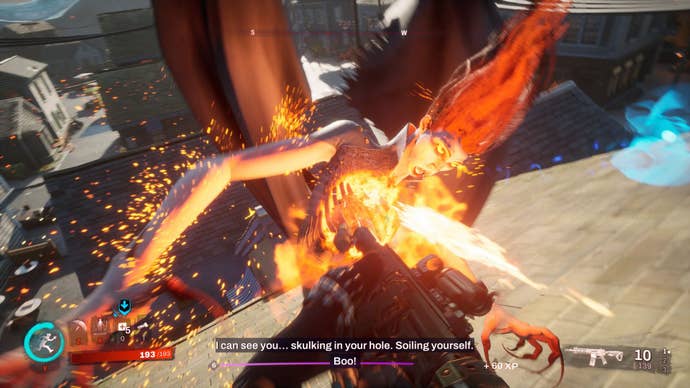
You’ll need to be dogged, too, to put up with the technical issues. While Redfall’s reported performance problems haven’t materialised for me on a powerful PC, I’ve been laid low by bugs that trapped me in the terrain or blocked the view of my sniper scope. A teammate repeatedly found crouch disabled, and stealth with it. Often the only way to reset was to quit out and start again from the nearest safehouse.
All in all, there’s a sense co-op isn’t nearly as convenient as it should be. Want to join a solo friend mid-session? You can’t: they’ll need to start from a different menu to host. Need to drop out early? That’ll make you unpopular, since the whole squad will be booted out of the game. As for trying out a different character mid-campaign, forget it. You’ll be so underlevelled as to make that impossible too.
Worst of all, story progress is tied only to the host – dooming their guests to play through the same missions again should they want to play in solo. Perhaps all of these restrictions are fine if you treat Redfall like a D&D campaign – meeting at the same time each week to play with the same people. But I remember a time when co-op shooters were considered a low-commitment pastime.
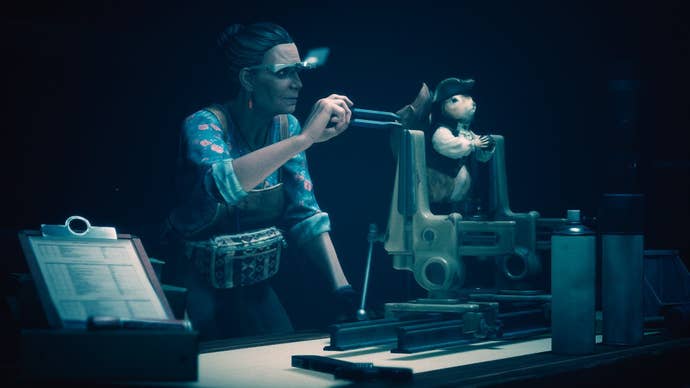
There’s a mission midway through Redfall’s first map named House of Echoes, in which you investigate the estate of a vampire god and former doctor named the Hollow Man. First, you see the place as it is, haunted and delapidated, before diving into a doll’s house to see it restored. Dishonored 2 fans will think instantly of A Crack in the Slab, a beloved mission in which you flit between the past and present of a manor at will. Only, the Hollow Man’s crib isn’t nearly so dynamic, nor so ripe with possibilities.
It’s hard not to view all of Redfall in these terms. As an echo of Arkane’s past glories – one in which the studio’s unique voice can still be heard, but more faintly than we’ve come to expect.
Redfall was reviewed on PC, with a code provided by Bethesda.
